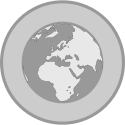Mistrzostwa Świata w Lekkoatletyce 2009 – bieg na 400 m przez płotki mężczyzn
Bieg na 400 m przez płotki mężczyzn – jedna z konkurencji rozegranych podczas 12. Mistrzostw Świata w Lekkoatletyce na Stadionie Olimpijskim w Berlinie.
Wymagane przez IAAF minimum kwalifikacyjne A do udziału w mistrzostwach wynosiło 49,25, natomiast minimum B 49,80 sekund[1]. W tej konkurencji nie startował żaden reprezentant Polski[2].
Terminarz
| Data | Godzina | Runda |
|---|---|---|
| 15 sierpnia | 20:20 | Eliminacje |
| 16 sierpnia | 20:15 | Półfinały |
| 18 sierpnia | 20:50 | Finał |
Rezultaty
| Poz. – pozycja | CR – rekord mistrzostw | NR – rekord kraju | PB – rekord życiowy | DNS – nie wystartowała |
| SB – najlepszy wynik w sezonie | AR – rekord kontynentu | DSQ – dyskwalifikacja |
Eliminacje
Do zawodów przystąpiło 32 zawodników z 24 krajów. Biegacze zostali podzieleni na cztery grupy. Aby dostać się do półfinału, w którym startowało 16 zawodników, należało zająć w swym biegu eliminacyjnym jedno z pierwszych trzech miejsc (Q). Dodatkowo do kolejnej rundy mogło awansować czterech biegaczy legitymujących się najlepszymi rezultatami wśród przegranych (q).
| Poz. | Bieg | Zawodnik | Reprezentacja | Czas | Uwagi |
|---|---|---|---|---|---|
| 1 | 3 | Kerron Clement | 48,39 | Q | |
| 2 | 3 | Danny McFarlane | 48,65 | Q | |
| 3 | 3 | Jehue Gordon | 48,66 | Q, NR | |
| 4 | 4 | David Greene | 48,76 | Q | |
| 5 | 3 | Félix Sánchez | 48,76 | q, SB | |
| 6 | 1 | Isa Phillips | 48,99 | Q | |
| 7 | 1 | Periklis Iakovakis | 49,12 | Q, SB | |
| 8 | 2 | Javier Culson | 49,27 | Q | |
| 9 | 3 | Omar Cisneros | 49,27 | q | |
| 10 | 2 | Bershawn Jackson | 49,34 | Q | |
| 11 | 1 | Johnny Dutch | 49,38 | Q | |
| 12 | 2 | Kazuaki Yoshida | 49,45 | Q, PB | |
| 13 | 4 | L. J. van Zyl | 49,48 | Q | |
| 14 | 1 | Andrés Silva | 49,51 | q, NR | |
| 15 | 2 | Tristan Thomas | 49,53 | q | |
| 16 | 1 | Kenji Narisako | 49,60 | ||
| 17 | 4 | Brendan Cole | 49,63 | Q | |
| 18 | 4 | Angelo Taylor | 49,64 | ||
| 19 | 3 | Michaël Bultheel | 49,67 | PB | |
| 20 | 4 | Fadil Bellaabouss | 49,73 | ||
| 21 | 4 | Aleksandr Dieriewiagin | 49,83 | ||
| 22 | 2 | Rhys Williams | 49,88 | ||
| 23 | 1 | Stanisław Melnykow | 50,41 | ||
| 24 | 1 | Mahau Sugimachi | 51,05 | ||
| 25 | 1 | Jussi Heikkilä | 51,42 | ||
| 26 | 2 | Ibrahima Maïga | 51,70 | ||
| 27 | 3 | Jonathan Williams | 52,41 | ||
| 2 | Josef Robertson | DQ | |||
| 2 | Héni Kechi | DQ | |||
| 3 | Joseph G. Abraham | DQ | |||
| 4 | Kurt Couto | DQ | |||
| 4 | Ali Obaid Shirook | DNF |
Półfinał
Rozegrano dwa biegi półfinałowe. Awans do finału gwarantowało zajęcie pierwszych trzech pierwszych miejsc w swojej rundzie. Skład finału został uzupełniony o dwóch zawodników, którzy legitymowali się najlepszymi czasami wśród przegranych.
| Poz. | Bieg | Zawodnik | Reprezentacja | Czas | Uwagi |
|---|---|---|---|---|---|
| 1 | 1 | Kerron Clement | 48,00 | Q, SB | |
| 2 | 2 | Bershawn Jackson | 48,23 | Q | |
| 3 | 2 | David Greene | 48,27 | Q, PB | |
| 4 | 1 | Félix Sánchez | 48,34 | Q, SB | |
| 5 | 1 | Javier Culson | 48,43 | Q | |
| 6 | 1 | Danny McFarlane | 48,49 | q | |
| 7 | 2 | Periklis Iakovakis | 48,73 | Q, SB | |
| 8 | 1 | Jehue Gordon | 48,77 | q | |
| 9 | 1 | L. J. van Zyl | 48,80 | ||
| 10 | 2 | Isa Phillips | 48,93 | ||
| 11 | 2 | Omar Cisneros | 49,21 | ||
| 12 | 2 | Johnny Dutch | 49,28 | ||
| 13 | 1 | Andrés Silva | 49,34 | NR | |
| 14 | 2 | Tristan Thomas | 49,76 | ||
| 15 | 1 | Brendan Cole | 49,92 | ||
| 16 | 2 | Kazuaki Yoshida | 50,34 |
Finał
| Poz. | Zawodnik | Reprezentacja | Czas | Uwagi |
|---|---|---|---|---|
| 1 | Kerron Clement | 47,91 | WL | |
| 2 | Javier Culson | 48,09 | NR | |
| 3 | Bershawn Jackson | 48,23 | ||
| 4 | Jehue Gordon | 48,26 | NR | |
| 5 | Periklis Iakovakis | 48,42 | SB | |
| 6 | Danny McFarlane | 48,65 | ||
| 7 | David Greene | 48,68 | ||
| 8 | Félix Sánchez | 50,11 |
Przypisy
- ↑ IAAF: IAAF World Championships in Athletics - Entry Standards - Men (ang.). [dostęp 2009-12-27].
- ↑ PZLA: Skład reprezentacji na MŚ w Berlinie (pol.). [dostęp 2009-12-27].
Linki zewnętrzne
- Pełne wyniki w bazie IAAF. berlin.iaaf.org. [zarchiwizowane z tego adresu (2009-08-21)].
Media użyte na tej stronie
An icon that represents a gold medal
The flag of Navassa Island is simply the United States flag. It does not have a "local" flag or "unofficial" flag; it is an uninhabited island. The version with a profile view was based on Flags of the World and as a fictional design has no status warranting a place on any Wiki. It was made up by a random person with no connection to the island, it has never flown on the island, and it has never received any sort of recognition or validation by any authority. The person quoted on that page has no authority to bestow a flag, "unofficial" or otherwise, on the island.
An icon that represents a silver medal
An icon that represents a bronze medal
Flag of Jamaica. “The sunshine, the land is green, and the people are strong and bold” is the symbolism of the colours of the flag. GOLD represents the natural wealth and beauty of sunlight; GREEN represents hope and agricultural resources; BLACK represents the strength and creativity of the people. The original symbolism, however, was "Hardships there are, but the land is green, and the sun shineth", where BLACK represented the hardships being faced.
The flag of the Dominican Republic has a centered white cross that extends to the edges. This emblem is similar to the flag design and shows a bible, a cross of gold and 6 Dominican flags. There are branches of olive and palm around the shield and above on the ribbon is the motto "Dios,Patria!, Libertad" ("God, Country, Freedom") and to amiable freedom. The blue is said to stand for liberty, red for the fire and blood of the independence struggle and the white cross symbolized that God has not forgotten his people. "Republica Dominicana". The Dominican flag was designed by Juan Pablo Duarte, father of the national Independence of Dominican Republic. The first dominican flag was sewn by a young lady named Concepción Bona, who lived across the street of El Baluarte, monument where the patriots gathered to fight for the independence, the night of February 27th, 1844. Concepción Bona was helped by her first cousin María de Jesús Pina.
Flaga Finlandii
The Flag of India. The colours are saffron, white and green. The navy blue wheel in the center of the flag has a diameter approximately the width of the white band and is called Ashoka's Dharma Chakra, with 24 spokes (after Ashoka, the Great). Each spoke depicts one hour of the day, portraying the prevalence of righteousness all 24 hours of it.
Autor:
- Gold_medal_world_centered.svg by Maix
- derivative work: Mboro (talk)
A gold medal with a globe icon
Autor:
- Silver_medal_world_centered.svg by Maix
- derivative work: Mboro (talk)
A silver medal with a globe icon
Autor:
- Bronze_medal_world_centered.svg by Maix
- derivative work: Mboro (talk)
A bronze medal with a globe icon
Pictograms of Olympic sports – . This is an unofficial sample picture. Images of official Olympic pictograms for 1948 Summer Olympics and all Summer Olympics since 1964 can be found in corresponding Official Reports.
Autor: André Zehetbauer from Schwerin, Deutschland, Licencja: CC BY-SA 2.0
Kerron Clement - beim Finallauf
Autor: André Zehetbauer from Schwerin, Deutschland, Licencja: CC BY-SA 2.0
Kerron Clement - Weltmeister im 400m Hürdenlauf































